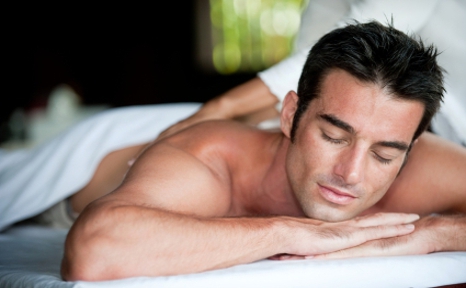


Massage is one of the most popular alternative therapies for people with arthritis, many of whom say it’s a great way to ease the pain and stiffness associated with the condition.
The most common form of arthritis, osteoarthritis, involves the breakdown of the cartilage that normally protects a joint, absorbing shock and allowing the joint to move smoothly. Without the normal amount of cartilage, bones rub together, causing pain, swelling and stiffness that can limit normal activity.
While the cartilage damage of arthritis cannot be reversed, massage can help improve flexibility and range of motion, while also relaxing tense muscles, reducing inflammation and ultimately lessening pain. Massage also stimulates the flow of blood and nutrients to the skin and underlying tissues.
There are many types of massage. The most common types are Swedish massage, which involves long, fluid stroking of muscles and tissues, and deep tissue massage, which uses intense, focused pressure to treat surface and deep muscles and tissues. Other kinds include trigger points, reflexology, hot stones and more. A doctor and massage therapist can help you pick the right type of massage for you.
While many studies consider massage as one component of a larger treatment program, there are a limited number of studies on the efficacy of massage therapy alone.
One such study did show significant reductions in osteoarthritis knee pain with massage therapy. Sixty-eight patients were randomly assigned to one of two groups: eight weeks of massage therapy by a licensed therapist, or a control group. Those in the massage group received 60-minute session of Swedish massage twice a week for first four weeks, and then once a week for the remainder of the study. All patients continued their usual care plan of pain medications, exercise and heat and ice application.
Pain scores in the massage group improved by an average of 17 points compared to the basic care group, using a common scale for reporting arthritis pain. Only one person reported increased discomfort following massage.
Another study of found massage beneficial for children with mild to moderate juvenile rheumatoid arthritis who were massaged by their parents 15 minutes a day for 30 day. The children's anxiety and stress hormone levels were immediately decreased by the massage, and over the 30-day period their pain – incidence, severity and activity-limiting pain – decreased on self-reports, parent reports, and their physician's assessment.
In general, research has shown that massage therapy can promote relaxation, reduce stress and depression, ease muscle pain and spasms, increase the body’s production of natural pain-killing endorphins and improve sleep and immune function.
It’s important to ask your doctor about how massage therapy fits into your overall treatment plan.
Look for a massage therapist who is experienced and comfortable working with people with arthritis. The American Massage Therapy Association recommends you ask a prospective therapist if they are licensed, if they are certified by the National Certification Board for Therapeutic Massage and Bodywork (NCBTMB), where they received their training and if they’re trained in any specific massage techniques. Be sure to communicate with your massage therapist before, during and after your massage about your arthritis, pain levels and preferences.
Remember: Massage should improve your arthritis symptoms, not make them worse. Quit, or try a different type of massage or new therapist, if you experience increased pain and don’t massage a joint that is very swollen or painful.
Share your experience with massage as an alternative treatment in this discussion thread.
Copyright © www.orthopaedics.win Bone Health All Rights Reserved